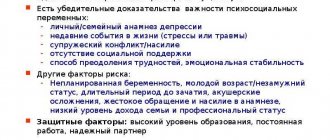Consultation via Skype or WhatsApp is available.
The feeling of anxiety is necessary for a person. It helps to mobilize in an emergency situation. But when excessive anxiety and fear begin to arise in the absence of a real threat or danger, then such a condition in medicine is called anxiety-phobic disorder. This is a disease in which harmless objects or phenomena cause a person to experience attacks of uncontrollable fear, panic and acute anxiety.
This pathological condition is characterized by the following symptoms that appear in a threatening situation:
- hot flash;
- cardiopalmus;
- pale skin;
- panic fear;
- dizziness, headache;
- nausea, vomiting;
- severe weakness in the limbs;
- dry mouth, lack of air.
A person is haunted by an anxious feeling of anticipation of trouble and is forced to constantly avoid formally dangerous situations. In most cases, with a long-term disorder, secondary depression occurs.
The external environment does not understand such people. Often ridicules their imaginary fears, which leads to feelings of guilt and worsening of the disease.
What is Anxiety Disorder
A person experiences various anxieties throughout his life.
As a rule, they are a reaction to stressful situations occurring in everyday life, at work, and so on. However, we can talk about anxiety disorder as a disease only in cases where systematic anxiety significantly affects a person’s quality of life and forces him to adjust his lifestyle. Symptoms of anxiety disorders are extremely unique and depend on the type of disease. Today, there are generalized disorder and adaptive disorder, which has an alarming increase. Generalized anxiety disorder is characterized by constant excessive anxiety that envelops the patient in almost any situation, even the most mundane. In turn, people with adaptive anxiety disorder have difficulty adapting to stressful situations. Constant fear, worry, tension and anxiety in this disease can affect the functioning of various organs and systems: a person may be subject to rapid heartbeat, shortness of breath, a “nervous” stomach, and so on.
Treatment
Therapy for anxiety disorder is selected individually, taking into account the characteristics of the patient. Treatment is carried out by a psychotherapist or psychiatrist (not a psychologist!). The basis of treatment for anxiety disorder is psychotherapy. In addition to psychotherapeutic assistance, the following are used:
- Pharmacotherapy. Taking medications can quickly relieve pathological anxiety, restore sleep and the functioning of the body’s autonomic system.
- Biofeedback therapy. A non-drug therapy method allows you to teach the psyche to independently reduce stress and anxiety.
- Physiotherapy: electro-sleep and electro-analgesia, magnetic therapy.
- L.F.K. (physical therapy), massage, manual therapy.
- Diet therapy.
- Music therapy, travel therapy.
- Sensory deprivation.
Causes of Anxiety Disorder
The causes of anxiety disorders are explained by several theories from a biological and psychological point of view.
Biological theories. According to these theories, the disease is explained as a kind of biological anomaly caused by certain changes in the body. The most popular version of the occurrence of anxiety disorders is an increase in the production of neurotransmitters.
We should not exclude the possibility that it is the locus coeruleus that is responsible for the symptoms of the disease. It is located in the brain, namely in the stem part of it, and with electrical stimulation it becomes the cause of anxiety and fear. Medications that reduce the activity of the locus coeruleus and therefore reduce anxiety include propranolol, clonidine, and benzodiazepines. In turn, medications like yohimbine increase anxiety.
Psychological theories. From the point of view of psychoanalysis, anxiety is a manifestation that signals the presence of a forbidden need or a certain impulse that needs to be hidden and prevented from expressing the need. According to this theory, the symptoms of anxiety disorders are explained as containing an unacceptable need within oneself.
Phobias and anxieties in general, from the point of view of behaviorism, are considered as a reflex reaction to the sudden or expected appearance of frightening or painful stimuli. The brain gets used to this reaction and soon anxiety begins to arise regardless of whether there is a stimulus or not.
More recently, cognitive psychology has emphasized erroneous and distorted mental patterns that precede the onset of anxiety symptoms. For example, with anxiety disorders, patients may react in panic to seemingly standard sensations and ailments in everyday life (palpitations, mild headache). As a result, fear intensifies, and over time it grows and leads to a powerful panic attack. In domestic medicine, anxiety disorders are classified as a group of functional neuroses (a more modern name is neurotic disorders). According to the traditional classification, the disease is classified as psychogenic, which is characterized by awareness of the disease, a variety of symptoms and manifestations, as well as a complete absence of changes in consciousness.
Which doctor will help you cope with anxiety?
Whatever the reasons for the appearance and development of a phobia, you should consult a doctor as soon as possible so that the disease does not get out of control and lead to serious consequences. If anxiety does not go away within several days, and you cannot determine the cause of the condition, do not delay visiting the doctor. Treatment will be much more effective if the specialist has sufficient practical experience and good specialized medical education. If necessary, take all the tests and undergo a full examination, this will help you get a more complete picture and make treatment more productive and faster.
If necessary, the therapist can refer the patient for consultation to specialists. An endocrinologist or neurologist, cardiologist or psychotherapist will be able to conduct a full examination and identify the root cause of anxiety. Often, effective treatment of chronic diseases automatically leads to a change in psychosomatic state. If no chronic diseases are identified, and the person complains of hallucinations and an anxious decline in mood, it is necessary to seek help from a psychiatrist. If feelings of anxiety lead to loss of consciousness or strange tremors appear in the limbs, a visit to the doctor cannot be postponed. If the symptoms grow like an avalanche and are accompanied by pronounced pain, convulsions, and sudden surges in pressure, it is better to call a doctor at home. Remember that anxiety often leads people to commit suicide because their mental state becomes unbearable.
Symptoms of Anxiety Disorder
The symptoms of the disease are extremely extensive. Depending on the type of anxiety symptoms, according to ICD-10, the following symptoms are distinguished:
For anxiety-phobic adaptation disorders, the following are distinguished:
- Obsessive-compulsive disorder;
- Panic disorder;
- Post-traumatic stress disorder.
- Anxiety-phobic disorder:
- Reaction to acute systematic stress;
- Obsessive-compulsive disorders;
- Anxiety-depressive disorder;
- Generalized anxiety disorder;
- Panic disorder.
Panic disorder. The main symptom is panic attacks, which are periodically repeated, appearing in the form of discomfort and sudden fear. Symptoms of this condition are the following: fear of death, fear of becoming crazy, increased sweating, trembling, chest pain, shortness of breath, suffocation, rapid heartbeat, dizziness. Panic attacks usually last around 10-20 minutes. Patients often think they are having a heart attack.
Each subsequent attack intensifies fears and anxieties, to which another fear is also added - the fear of the next attack. Patients are more afraid not of the attack itself, but of the fact that it will happen at the wrong time or in places where it will be difficult for them to provide help. For this reason, patients begin to go around places with large crowds of people and completely deserted places. They stop walking alone and try not to leave the house at all. This phenomenon, which significantly reduces the quality of life, is known to science as Agoraphobia.
Some patients experience difficulties with anxiety disorders for many years of life due to constant relapses. Others manage to cope with the disease on their own - suddenly and spontaneously. There is also a third group of people who succumb to panic disorders and become couch potatoes, and this conditional status remains with them for several years.
Generalized anxiety disorders are characterized by a unique feature. This type of disease causes anxiety, which is not associated with any circumstances: situations, place of stay, and so on. Seizures are non-fixed and occur at any time and anywhere.
A diagnosis of anxiety disorder is made only when the symptoms of the disease have plagued the patient for at least 2-3 weeks. The most popular symptoms are:
- Fussiness, trembling, headaches, inability to relax and other types of motor tension;
- Difficulty concentrating, constant worry, worries about potential failures and other concerns;
- Dry mouth, epigastric discomfort, tachypnea, tachycardia, sweating, dizziness and other manifestations of autonomic hyperactivity.
Experts begin to talk about mixed anxiety and depressive disorders in cases where depression and anxiety are inherent in the patient, but they are moderately pronounced - not pronounced enough to determine a diagnosis.
In these conditions, diagnosis is quite problematic due to insufficiently expressed symptoms. The diagnosis of panic disorder is made in this case, rather, by exclusion. In generalized anxiety disorder, the symptoms are mild to moderate in intensity and the anxiety is vague but persistent. This is the main difference between this disease and panic disorders, in which attacks of excessively high intensity occur.
Generalized anxiety disorder is also called “free-floating.” This is explained by internal tension, a feeling of threat or potential misfortune that arises as a result of certain situations and conflicts of minor magnitude. In the eyes of patients, these situations have increasingly dire consequences; patients begin to consider all problems unsolvable. Often, in addition to anxiety, excessive aggressiveness appears. This disease negatively affects the musculoskeletal and autonomic-endocrine systems.
Most researchers agree that generalized anxiety disorder is not an independent disease, but rather a certain phenomenon of anxiety expressed in other diseases. For example, in its manifestation this disorder resembles anticipatory anxiety, which is a hallmark of panic disorder. However, unlike the same panic disorders, vegetative manifestations are involved to a lesser extent, while the prognosis of generalized anxiety disorder is more optimistic, and the disease itself begins more smoothly, gradually. As for the symptoms, they are not clonic, as in panic disorders, but tonic. Despite these differences between the two types of disease, the first disease can lead to the second, and the second to the first.
Social phobia is one of the manifestations of anxiety disorders. This phobia is expressed in excessive fear of experiencing embarrassment or humiliation in front of others, even strangers. This forces patients to avoid establishments where groups of people gather, as well as public speaking, being in large companies, and so on. As a rule, social phobia implies significant limitations in the patient’s life activities, and this often leads the patient to the next stage – Agoraphobia.
A simple phobia is expressed by excessive fear of specific situations, objects, creatures, and so on. There are a lot of examples of phobias: fear of heights, pets, snakes, airplanes, elevators, and so on. When meeting an object of fear, the patient always experiences trembling, horror, heart rate increases and sweating increases.
Obsessive-compulsive disorder is a combination of compulsivity and obsession (obsession). The latter is characterized by persistent impulses, thoughts or ideas, usually perceived as meaningless. For example, the thought of selling T-shirts, blasphemous thoughts, and so on. Patients realize the meaninglessness of these thoughts, but are unable to cope with this internal zeal. As for compulsivity, it is rather a reaction to obsessive thoughts that have arisen, aimed at neutralizing them and, accordingly, achieving psychological comfort. However, this behavior is senseless, and at the same time absolutely unreasonable.
Obsessive-compulsive disorders have several types. The most common is known as fear of dirt. Thoughts on the topic of pollution lead to the fact that patients try to stay in the cleanest possible places, and spend almost 2-3 hours a day washing. Another fairly popular type of obsessive-compulsive disorder is compulsive checking. Patients always check several times whether the iron, gas is turned off, whether the door is closed, and so on. In general, compulsive behavior is somewhat reminiscent of excesses in eating, drinking, increased sexuality, and gambling, but in the case of this disease, the thoughts and behavioral characteristics that arise are always unpleasant for the patient.
Post-traumatic stress is an illness that occurs after car accidents, rape, beatings, after war and other severe physical or psychological trauma. Patients, as a rule, repeatedly experience what happened, replaying the unfavorable situation in their heads. Memories can appear both in everyday activities and at night in the form of nightmares. The patient experiences mental numbness, becomes passive, does not experience positive emotions, and loses interest in work and hobbies. Also, post-traumatic stress leads to overexcitation, which is expressed by excessive fearfulness, nightmares, and insomnia.
Post-traumatic stress disorders are divided into three groups depending on severity. The first stage is a completely adequate reaction to trauma, which is expressed in maximum concentration on what happened. The patient is overcome with anxiety. The second degree occurs approximately a month after the incident, if the person is still haunted by memories of what happened. At this stage, nightmares intensify, emotionality practically does not appear, and the feeling of helplessness continues to grow. The third and final stage is loss of spirit and complete demoralization, loss of the meaning of life, despair.
With anxiety disorders, patients focus as much as possible on their shortcomings and cannot adequately form an assessment of themselves. As a result, people become withdrawn and insecure, and they start new acquaintances and relationships only when they know for sure that they will not be rejected. Rejection, as well as the loss of an existing person, is a strong moral blow for patients, so they prefer not to take risks and do not particularly establish relationships with people. However, loneliness is not an option!
The symptoms of anxiety disorders are multifaceted and varied. The main symptoms of the disease include:
- Avoidance of relationships with new people;
- Desire for relationships with society, bordering on extreme shyness;
- Self-isolation from society;
- High sensitivity to refusals and criticism;
- Disgust for one's own person;
- Extremely low self-esteem;
- Feeling of one's own inferiority;
- Desire to avoid physical contact;
- Shyness and embarrassment can be caused by the slightest preconditions;
- Lack of desire for intimacy;
- Timidity, modesty within unreasonable limits;
- Trust only yourself;
- Excessive self-criticism;
- Feeling of loneliness;
- Feeling of inferiority compared to other people;
- Chemical and mental dependence.
First symptoms and signs
An uncontrollable feeling of anxiety that lasts for at least six months without objective reasons is the main symptom of an anxiety disorder. Anxiety can be so strong that the patient’s life changes dramatically. A person will not be able to leave the house, work, or communicate with loved ones. Anxiety may subside for a few hours, days or weeks, but any minor reason will cause it to return again.
Physiologically, the following symptoms may appear:
- constant feeling of fatigue;
- disturbed sleep;
- persistent fear;
- inability to concentrate on any task or relax;
- trembling in hands;
- nervousness;
- rapid heartbeat in the absence of heart problems;
- dizziness;
- excessive sweating;
- headache and muscle pain.
Diagnosis of an anxiety disorder
The presence of the above symptoms does not yet indicate the disease. The diagnosis must be made by a psychiatrist, and in order for the specialist to recognize the problem and confirm the presence of the disease, the symptoms of anxiety disorders must bother the patient for at least 2-3 weeks.
Anxiety disorders diagnose . But identifying the type of anxiety disorder is quite problematic. The reason for this is similar symptoms in different types of disease. Its type and degree can be identified by analyzing the places and times of occurrence of symptoms. In general, in diagnosing anxiety disorders, the depression and anxiety scale, the Spielberger-Hanin test, the personality anxiety scale, and many others are used.
If you suspect an anxiety disorder, you need to gather yourself, adequately assess the situation and try to answer several questions for yourself:
- Are there feelings of fear and anxiety, problems with autonomic regulation and sleep disturbances;
- How long have the symptoms continued to bother you?
- Can the symptoms be associated with organic diseases? It is better to visit a doctor and check your health;
- Is there any systematicity in the appearance of symptoms (they happen in a certain place, under certain conditions, at a specific time, and so on).
How to get rid of it yourself
Few people manage to get rid of anxiety disorder on their own. This is a disease, it needs to be treated, and not wait until it “goes away on its own” or try to fight it on your own. But there are many ways to temporarily reduce anxiety, stop a panic attack, reduce tension and feelings of fear. These include: auto-training, water treatments (cold shower in the morning, warm bath in the evening), giving up alcohol, physical exercise (“intensive exercise”), normalizing the daily routine and sleep-wake cycle, spiritual development, personal growth, etc.
See advice from psychologists on how to cope with anxiety and panic HERE.
Who is most susceptible to developing phobic neurosis and for what reasons?
This ailment can develop both as an independent disease against the background of existing specific character traits and temperamental characteristics, and as a complication of existing diseases - psychopathy, psychasthenia, alcoholism, drug addiction. Neurosis with fears can aggravate the course of diseases of internal organs (myocardial infarctions, strokes), oncological processes, endocrine pathologies. Both men and women are susceptible to phobic neurosis. The primary development of symptoms of the disease is characteristic of adolescence, as well as the transitional stage from maturity to old age. You can often observe phobias in women during menopause.
People's fears develop against the background of:
- chronic psychophysical fatigue and overstrain;
- received mental trauma;
- any long-term, debilitating disease;
- regular lack of sleep and poor nutrition;








